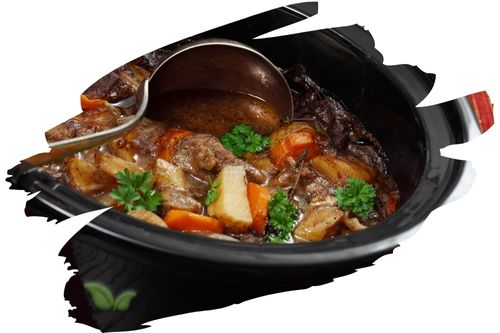
Introduction:
When it comes to desserts, South Asian cuisine is renowned for its diverse and delectable offerings. Among the many delightful ingredients used, green cardamom stands out as a true gem. Known for its enchanting aroma and distinct flavor, green cardamom has been an essential spice in the region for centuries. In this article, we will explore the fascinating world of "The Aromatic Splendor of Green Cardamom in South Asian Desserts." Join us on this culinary adventure, as we dive into the history, cultural significance, and mouthwatering desserts that feature this cherished spice.
The History and Cultural Significance of Green Cardamom in South Asian Desserts:
Green cardamom, scientifically known as Elettaria cardamomum, is native to the Indian subcontinent and has been an integral part of South Asian culture for ages. Its history dates back to ancient civilizations, where it was revered for its medicinal properties and culinary uses. Green cardamom was highly valued and used in various traditional rituals and ceremonies, symbolizing warmth, hospitality, and love.
Over time, green cardamom became a prominent ingredient in South Asian desserts, adding a burst of flavor and an irresistible aroma to sweet delicacies. Its popularity spread across the region, influencing the culinary traditions of countries like India, Pakistan, Bangladesh, Nepal, and Sri Lanka.
The Flavor Profile of Green Cardamom:
Green cardamom offers a unique and complex flavor profile that elevates any dessert it graces. Its taste is a beautiful fusion of citrusy, floral, and herbal notes, with a hint of sweetness. The warm and slightly spicy undertones add depth to the overall taste, making it an unforgettable ingredient in South Asian desserts.
Dessert Creation: The Art of Balancing Green Cardamom's Aroma:
South Asian chefs and home cooks have mastered the art of using green cardamom in desserts, achieving a perfect balance of flavors and aromas. The key lies in understanding the potency of the spice and using it sparingly, as too much can overpower the dessert's natural sweetness.
To truly experience the aromatic splendor of green cardamom, one must savor desserts like Gulab Jamun, Kheer, Rasgulla, Sheer Khurma, and many more. Each of these delicacies showcases the versatility of green cardamom, as it enhances the overall taste without overshadowing other ingredients.
Popular South Asian Desserts Infused with Green Cardamom:
1. Gulab Jamun:
Gulab Jamun, a beloved Indian dessert, features deep-fried milk dumplings soaked in a luscious sugar syrup infused with green cardamom. The spice not only imparts its alluring fragrance but also complements the sweetness of the syrup, creating an indulgent treat that melts in your mouth.
2. Kheer:
Kheer, a traditional rice pudding, gains a new dimension with the addition of green cardamom. The spice infuses the creamy dessert with its delightful aroma, making every spoonful a delightful experience.
3. Rasgulla:
Rasgulla, a popular Bengali sweet, features soft and spongy cottage cheese balls soaked in a sugar syrup flavored with green cardamom. The spice takes this dessert to new heights, making it a favorite at festive celebrations.
4. Sheer Khurma:
Sheer Khurma, a classic dessert enjoyed during Eid festivities, is a vermicelli pudding cooked with milk and garnished with nuts and green cardamom. The spice enriches the dish, adding a touch of warmth to this joyous occasion.
Health Benefits of Green Cardamom in South Asian Desserts:
Beyond its tantalizing taste and aroma, green cardamom also offers various health benefits. It is a rich source of antioxidants and contains essential vitamins and minerals, such as vitamin C, iron, and calcium. The spice aids digestion, improves oral health, and may help regulate blood pressure and cholesterol levels when consumed in moderation.
FAQs About "The Aromatic Splendor of Green Cardamom in South Asian Desserts":
1. What makes green cardamom unique in South Asian desserts?
Green cardamom's enchanting aroma and distinct flavor set it apart from other spices, making it a prized ingredient in South Asian sweet treats.
2. How is green cardamom used in South Asian desserts?
Green cardamom is often ground into powder and added to desserts or used whole in some recipes to infuse its essence into the dish.
3. Can green cardamom be used in savory dishes as well?
Yes, green cardamom is versatile and can be used in both sweet and savory dishes, adding a delightful touch to various cuisines.
4. What are the traditional medicinal uses of green cardamom in South Asia?
Green cardamom has been historically used for digestive and respiratory ailments, as well as for its ability to freshen breath.
5. Are there different types of cardamom available?
Yes, apart from green cardamom, there is also black cardamom, which has a smokier flavor and is used more commonly in savory dishes.
6. Where can I purchase green cardamom for my desserts?
Green cardamom is available in most grocery stores, spice markets, and online retailers, ensuring you can easily find this aromatic spice.
Conclusion:
"The Aromatic Splendor of Green Cardamom in South Asian Desserts" is a journey filled with flavor, tradition, and cultural significance. This precious spice has been cherished for generations, and its allure continues to enchant dessert lovers worldwide. From heavenly Gulab Jamun to comforting Sheer Khurma, green cardamom remains an essential ingredient that transforms ordinary desserts into extraordinary delights.
So, next time you indulge in a South Asian dessert, take a moment to savor the mesmerizing aroma and taste of green cardamom. Let it transport you to a world of culinary wonders, where tradition and innovation merge in sweet harmony.
Alert: While spices can have many beneficial properties for health, using them for medical purposes should be done under the guidance and supervision of a healthcare professional or specialist. Some spices may interact with medications or cause adverse reactions in certain individuals, and it is important to use them safely and appropriately. If you are considering using spices for a medical condition, it is important to consult with a healthcare professional before doing so.




















































